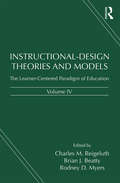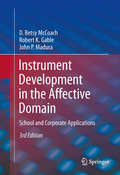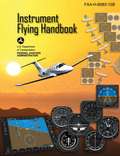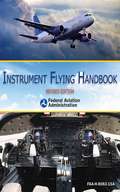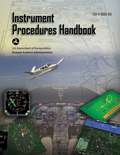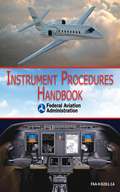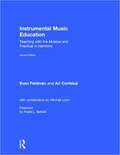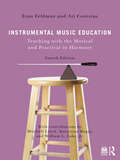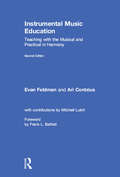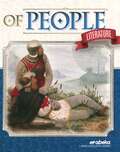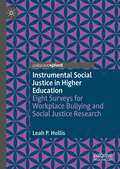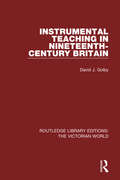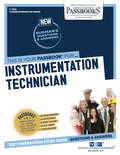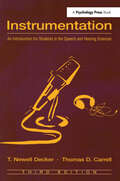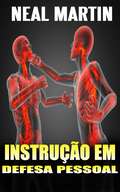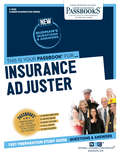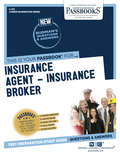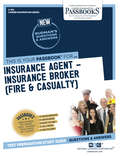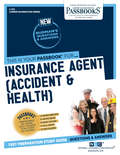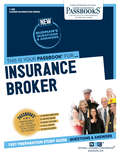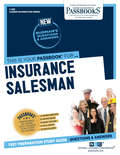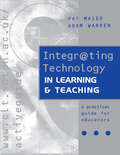- Table View
- List View
Instructional-Design Theories and Models, Volume IV: The Learner-Centered Paradigm of Education
by Charles M. Reigeluth, Brian J. Beatty, and Rodney D. MyersInstructional-Design Theories and Models, Volume IV provides a research-based description of the current state of instructional theory for the learner-centered paradigm of education, as well as a clear indication of how different theories and models interrelate. Significant changes have occurred in learning and instructional theory since the publication of Volume III, including advances in brain-based learning, learning sciences, information technologies, internet-based communication, a concern for customizing the student experience to maximize effectiveness, and scaling instructional environments to maximize efficiency.In order to complement the themes of Volume I (commonality and complementarity among theories of instruction), Volume II (diversity of theories) and Volume III (building a common knowledge base), the theme of Volume IV is shifting the paradigm of instruction from teacher-centered to learner-centered and integrating design theories of instruction, assessment, and curriculum. Chapters in Volume IV are collected into three primary sections: a comprehensive view of the learner-centered paradigm of education and training, elaborations on parts of that view for a variety of K-12 and higher education settings, and theories that address ways to move toward the learner-centered paradigm within the teacher-centered paradigm. Instructional-Design Theories and Models, Volume IV is an essential book for anyone interested in exploring more powerful ways of fostering human learning and development and thinking creatively about ways to best meet the needs of learners in all kinds of learning contexts.
Instructional-design Theories and Models: A New Paradigm of Instructional Theory, Volume II
by Charles M. ReigeluthInstructional theory describes a variety of methods of instruction (different ways of facilitating human learning and development) and when to use--and not use--each of those methods. It is about how to help people learn better. This volume provides a concise summary of a broad sampling of new methods of instruction currently under development, helps show the interrelationships among these diverse theories, and highlights current issues and trends in instructional design. It is a sequel to Instructional-Design Theories and Models: An Overview of Their Current Status, which provided a "snapshot in time" of the status of instructional theory in the early 1980s. Dramatic changes in the nature of instructional theory have occurred since then, partly in response to advances in knowledge about the human brain and learning theory, partly due to shifts in educational philosophies and beliefs, and partly in response to advances in information technologies. These changes have made new methods of instruction not only possible, but also necessary in order to take advantage of new instructional capabilities offered by the new technologies. These changes are so dramatic that many argue they constitute a new paradigm of instruction, which requires a new paradigm of instructional theory. In short, there is a clear need for this Volume II of Instructional Design Theories and Models. To attain the broad sampling of methods and theories it presents, and to make this book more useful for practitioners as well as graduate students interested in education and training, this volume contains twice as many chapters, but each half as long as the ones in Volume I, and the descriptions are generally less technical. Several unique features are provided by the editor to help readers understand and compare the theories in this book: *Chapter 1, which discusses the characteristics of instructional theory and the nature of the new paradigm of instruction, helps the reader identify commonalities across the theories. *Chapter forewords, which summarize the major elements of the instructional-design theories, are useful for reviewing and comparing theories, as well as for previewing a theory to decide if it is of interest, and for developing a general schema that will make it easier to understand. *Editor's notes provide additional help in understanding and comparing the theories and the new paradigm of instruction to which they belong. *Units 2 and 4 have introductory chapters to help readers analyze and understand the theories in those units. This is an essential book for anyone interested in exploring new approaches to fostering human learning and development and thinking creatively about ways to best meet the needs of learners in all kinds of learning contexts. Readers are invited to use Dr. Charles Reigeluth's Web site to comment and to view others' comments about the instructional design theories in this book, as well as other theories. Point your browser to: www.indiana.edu/~idtheory
Instrument Development in the Affective Domain
by D. Betsy Mccoach John P. Madura Robert K. GableWhether the concept being studied is job satisfaction, self-efficacy, or student motivation, values and attitudes--affective characteristics--provide crucial keys to how individuals think, learn, and behave. And not surprisingly, as measurement of these traits gains importance in the academic and corporate worlds, there is an ongoing need for valid, scientifically sound instruments. For those involved in creating self-report measures, the completely updated Third Edition of Instrument Development in the Affective Domain balances the art and science of instrument development and evaluation, covering both its conceptual and technical aspects. The book is written to be accessible with the minimum of statistical background, and reviews affective constructs from a measurement standpoint. Examples are drawn from academic and business settings for insights into design as well as the relevance of affective measures to educational and corporate testing. This systematic analysis of all phases of the design process includes: Measurement, scaling, and item-writing techniques.Validity issues: collecting evidence based on instrument content.Testing the internal structure of an instrument: exploratory and confirmatory factor analyses. Measurement invariance and other advanced methods for examining internal structure.Strengthening the validity argument: relationships to external variables. Addressing reliability issues. As a graduate course between covers and an invaluable professional tool, the Third Edition of Instrument Design in the Affective Domain will be hailed as a bedrock resource by researchers and students in psychology, education, and the social sciences, as well as human resource professionals in the corporate world.
Instrument Flying Handbook (Federal Aviation Administration): FAA-H-8083-15B
by Federal Aviation AdministrationThis is the FAA's primary pilot resource for instrument flight rules and training. It (IFR) covers everything pertinent to operating an aircraft, both in instrument meteorological conditions (IMC) and without reference to outside visuals, relying solely on the information gleaned from the cockpit. Information applies to both analog and electronic flight displays, and is organized into separate coverage of the traditional and pictorial displays.Instrument Flying Handbook includes chapters on national airspace system, the air traffic control system, human factors, aerodynamics, flight instruments, flight maneuvers for IFR operations, navigation, emergency operations, as well as helicopter operations and more. Advanced systems are covered, including flight management systems, the primary flight display (PFD) and multi-function display (MFD), synthetic vision, and traffic advisory systems. Instrument clearance shorthand is discussed, and an instrument training lesson guide is provided.The Instrument Flying Handbook is designed for use by flight instructors, pilots preparing for the Instrument Rating FAA Knowledge and Practical Exams, and instrument-rated pilots looking for a refresher or preparing for an Instrument Proficiency Check (IPC). This edition features with full-color illustrations and diagrams, along with a comprehensive glossary and index.
Instrument Flying Handbook: Revised Edition
by Federal Aviation AdministrationThe Federal Aviation Administration’s Instrument Flying Handbook provides pilots, student pilots, aviation instructors, and controllers with the knowledge and skills required to operate an aircraft in instrument meteorological conditions.This up-to-date edition is illustrated with full-color graphics and photographs and covers topics such as basic atmospheric science, the air traffic control system, spatial disorientation and optical illusions, flight support systems, and emergency responses. The book’s two appendixes contain information on clearance shorthand and an instrument training lesson guide. Readers will also find a handy glossary and index.Since many questions on FAA exams are taken directly from the information presented in this text, the Instrument Flying Handbook is a great study guide for potential pilots looking for certification and a perfect gift for any aircraft or aeronautical buff.Additional topics included throughout this text include:Ground-based radar navigationApproaches to civil airportsFlying and landing in difficult weather conditionsAircraft system malfunctionsAirspace classificationDifferential global positioning systemsAnd many more!
Instrument Procedures Handbook: FAA-H-8083-16A (FAA Handbooks Ser.)
by Federal Aviation AdministrationThis is the new 2015 edition of the FAA's previous "Instrument Procedures Handbook" (previously the FAA-H-8083-16).This book covers all of the information needed to operate safely within the airspace system. In the FAA's "Instrument Procedures Handbook" (#FAA-H-8083-16A) the emphasis is placed on operations and procedural information for real-world use, which makes this the next logical step for pilots after learning basic instrument skills from the FAA's "Instrument Flying Handbook" (#FAA-H-8083-15B). Using this book, pilots can more directly apply the concepts to their current flying situation, and learn how their acquired skills are best used in today’s IFR environment. Considered industry-wide as a top source for instrument procedures information and a "must read” for all instrument pilots, this new 2015 edition brings pilots the latest changes to procedures and even more insights and guidance on how to operate safely within the national airspace system. Detailed information is provided for every navigation receiver and phase of flight on the required precision necessary to stay within protected airspace and to make a successful approach.While it was designed as a reference for professional pilots, the specialized glossary, index, full-color illustrations and photographs in this book make it a valuable training aid for flight instructors, instrument pilots, and instrument students alike. Each topic covered is well-detailed and explained in user-friendly terms, along with full-color depictions to aid understanding.Instrument flight instructors, pilots, and students will need this resource since it is used as a reference for the Airline Transport Pilot and Instrument Knowledge Tests and for the Practical Test Standards. Whether a pilot is a seasoned professional or recently completed an Instrument Rating course, this FAA handbook is sure to encourage more precise instrument techniques and ultimately create a safer pilot.
Instrument Procedures Handbook: Faa-h-8083-16a (FAA Handbooks Ser.)
by Federal Aviation AdministrationDesigned as a technical reference for instrument-rated pilots who want to maximize their skills in an "Instrument Flight Rules” environment, this revised and up-to-date edition of the Federal Aviation Administration’s Instrument Procedures Handbook contains the most current information on FAA regulations, the latest changes to procedures, and guidance on how to operate safely within the National Airspace System in all conditions. Featuring an index, an appendix, a glossary, full-color photos, and illustrations, Instrument Procedures Handbook is the most authoritative book on instrument use anywhere.
Instrumental Music Education: Teaching with the Musical and Practical in Harmony
by Evan Feldman Ari Contzius<p>Instrumental Music Education: Teaching with the Musical and Practical in Harmony, 2nd Edition is intended for college instrumental music education majors studying to be band and orchestra directors at the elementary, middle school, and high school levels. This textbook presents a research-based look at the topics vital to running a successful instrumental music program, while balancing musical, theoretical, and practical approaches. A central theme is the compelling parallel between language and music, including "sound-to-symbol" pedagogies. Understanding this connection improves the teaching of melody, rhythm, composition, and improvisation. <p>The companion website contains over 120 pedagogy videos for wind, string, and percussion instruments, performed by professional players and teachers, over 50 rehearsal videos, rhythm flashcards, and two additional chapters, "The Rehearsal Toolkit," and "Job Search and Interview." It also includes over 50 tracks of acoustically pure drones and demonstration exercises for use in rehearsals, sectionals and lessons.</p>
Instrumental Music Education: Teaching with the Musical and Practical in Harmony
by Evan Feldman Ari ContziusInstrumental Music Education: Teaching with the Theoretical and Practical in Harmony, Fourth Edition, is intended for college instrumental music education majors studying to be band and orchestra directors at the elementary, middle school, and high school levels. Its fundamental goal is to prepare music teachers for the real world, looking at the topics vital to running a successful instrumental music program, while balancing musical, theoretical, and practical approaches. A central theme is the compelling parallel between language and music, including "sound-to-symbol" pedagogies. Understanding this connection improves the teaching of melody, rhythm, composition, and improvisation.Unique to this book is its research-based approach; its overview of a variety of educational sites is more extensive than any similar resource. Its accompanying Instructor and Student Resources include over 120 videos filmed with high school, college, and community concert, pedagogy videos for all wind and string instruments, presented by professional players and teachers.New to this edition: A section on social emotional learning (SEL) An introduction to culturally responsive teaching Additional discussion of teaching composition, improvisation, and creativity Expanded discussion of the advantages, challenges, and philosophies surrounding teaching ensembles other than band and orchestra Many updates and additions throughout the text Offering best practices rooted in experience and clear, balanced coverage of pedagogical, philosophical, and administrative issues, this textbook effectively prepares future band and orchestra instructors to teach at all levels.
Instrumental Music Education: Teaching with the Musical and Practical in Harmony (Second Edition)
by Evan Feldman Ari Contzius Mitchell Lutch<p>Instrumental Music Education: Teaching with the Musical and Practical in Harmony, 2nd Edition is intended for college instrumental music education majors studying to be band and orchestra directors at the elementary, middle school, and high school levels. This textbook presents a research-based look at the topics vital to running a successful instrumental music program, while balancing musical, theoretical, and practical approaches. A central theme is the compelling parallel between language and music, including "sound-to-symbol" pedagogies. Understanding this connection improves the teaching of melody, rhythm, composition, and improvisation. <p>The companion website contains over 120 pedagogy videos for wind, string, and percussion instruments, performed by professional players and teachers, over 50 rehearsal videos, rhythm flashcards, and two additional chapters, "The Rehearsal Toolkit," and "Job Search and Interview." It also includes over 50 tracks of acoustically pure drones and demonstration exercises for use in rehearsals, sectionals and lessons. <p>New to this edition: <p> <li> Alternative, non-traditional ensembles: How to offer culturally relevant opportunities for more students, including mariachi, African drumming, and steel pans. <li> More learning and assessment strategies <li> The science of learning and practicing: How the brain acquires information <li> The philosophies of Orff and El Sistema, along with the existing ones on Kodály, Suzuki, and Gordon. <li> The Double Pyramid of Balance: Francis McBeth’s classic system for using good balance to influence tone and pitch. <li> Updated information about copyright for the digital age</li> </p>
Instrumental Music for Dyslexics: A Teaching Handbook
by Sheila OglethorpeInstrumental Music for Dyslexics is written mainly for music teachers. It describes dyslexia in layman's terms and explains how the various problems which a dyslexic may have can affect all aspects of learning to play a musical instrument. It alerts the music teacher with a problem pupil to the possibilities of that pupil's having some form of dyslexia. Although Sheila Oglethorpe is primarily a piano teacher the general principle behind most, if not all, the suggestions is such that they can be adapted for use by other instrumentalists. The book presents ways in which the music teacher can contribute to the self esteem and thereby the general welfare of the dyslexic pupil who is often musically gifted and has much to offer. The book will also be of interest to dyslexia specialists who have hitherto directed their concentration towards the language-based problems of the dyslexic.
Instrumental Social Justice in Higher Education: Eight Surveys for Workplace Bullying and Social Justice Research
by Leah P. HollisThis book offers eight validated instruments on workplace bullying to support robust mixed methods approaches for social justice research. Workplace bullying is an excellent starting point from which scholars can consider social justice research. The data shows that marginalized and disenfranchised groups (minoritized groups, women, junior faculty, and the LGBTQ+ community) are disproportionately affected. The outcomes included career interruption and severe health disparities. Though there is a demand for workplace bullying instruments, the book also lays a foundation for creating surveys to address these populations more effectively.
Instrumental Teaching in Nineteenth-Century Britain (Routledge Library Editions: The Victorian World)
by David GolbyFirst published in 2004, this book demonstrates that while Britain produced many fewer instrumental virtuosi than its foreign neighbours, there developed a more serious and widespread interest in the cultivation of music throughout the nineteenth century. Taking a predominantly historical approach, the book moves from a discussion of general developments and issues to a detailed examination of violin pedagogy, method and content, which indicates society’s influence on cultural trends and informs the discussion of other instruments and institutional training that follows. In the first study of its kind, it examines in depth the inextricable links between trends in society, education and levels of achievement. It also extends beyond profession and ‘art’ music to amateur and ‘popular’ spheres. A useful chronology of developments in nineteenth-century British music education is also included. This book will be of interest to those studying the history of instrumental teaching and Victorian music.
Instrumentation Technician: Passbooks Study Guide (Career Examination Series)
by National Learning CorporationThe Instrumentation Technician Passbook® prepares you for your test by allowing you to take practice exams in the subjects you need to study. It provides hundreds of questions and answers in the areas that will likely be covered on your upcoming exam.
Instrumentation: An Introduction for Students in the Speech and Hearing Sciences
by T. Newell Decker Thomas D. CarrellWhile keeping the scope and essential thrust of the original book unchanged, this third edition has been updated to reflect the latest technology. For instance, important revisions have been made to a few chapters, while one chapter has been eliminated and replaced with a newer chapter dealing with recent developments in digital and consumer electronics that are relevant to laboratory instrumentation. The authors hope the readers of this text will be more confident with instrumentation and more willing to experiment with it, as well as be able to appreciate the possible ways that electronic instrumentation can be used in their work. The book was written with the undergraduate in speech and hearing sciences uppermost in mind. Instead of detailed information about individual pieces of instrumentation, a more basic and broad descriptive approach has been used. Throughout, examples have been provided regarding how certain pieces of equipment can be used in the clinic or laboratory. One or more step-by-step exercises are included at the end of certain chapters to help students obtain hands-on experience and equipment flowcharts help reinforce the exercise. Students who complete this book will have a basic understanding of the major pieces of instrumentation in the hearing and speech clinic/laboratory.
Instrução em defesa pessoal
by Neal Martin Lisa HenriquesInstrução em defesa pessoal Especialista em Defesa Pessoal Livro II Neal Martin
Insurance Adjuster: Passbooks Study Guide (Career Examination Series #C-3636)
by National Learning CorporationThe Insurance Adjuster Passbook® prepares you for your test by allowing you to take practice exams in the subjects you need to study. It provides hundreds of questions and answers in the areas that will likely be covered on your upcoming exam, including but not limited to: interviewing; understanding and interpreting tabular material; preparing written material; reading, understanding and applying complex written material; and other related areas.
Insurance Agent – Insurance Broker: Passbooks Study Guide (Career Examination Series #C-373)
by National Learning CorporationThe Insurance Agent – Insurance Broker Passbook® prepares you for your test by allowing you to take practice exams in the subjects you need to study. It provides hundreds of questions and answers in the areas that will likely be covered on your upcoming exam.
Insurance Agent – Insurance Broker: Passbooks Study Guide (Career Examination Series #C-373)
by National Learning CorporationThe Insurance Agent – Insurance Broker (Fire & Casualty) Passbook® prepares you for your test by allowing you to take practice exams in the subjects you need to study. It provides hundreds of questions and answers in the areas that will likely be covered on your upcoming exam, including but not limited to: reading and interpreting written material; understanding basics of insurance; understanding and interpreting tabular material; preparing written material; reading, understanding and applying complex written material; and other related areas.
Insurance Agent: Passbooks Study Guide (Career Examination Series #C-373)
by National Learning CorporationThe Insurance Agent (Accident & Health) Passbook® prepares you for your test by allowing you to take practice exams in the subjects you need to study. It provides hundreds of questions and answers in the areas that will likely be covered on your upcoming exam.
Insurance Broker: Passbooks Study Guide (Career Examination Series #C-388)
by National Learning CorporationThe Insurance Broker Passbook® prepares you for your test by allowing you to take practice exams in the subjects you need to study. It provides hundreds of questions and answers in the areas that will likely be covered on your upcoming exam.
Insurance Planning
by James F. Dalton Michael A. Dalton Thomas P. Langdon Joseph M. GilliceThis book is written for undergraduate and graduate level students interested in acquiring an understanding of financial planning from a professional financial planning viewpoint. The text is intended to be used in an overall curriculum in financial planning in an Insurance course or in a course that combines Fundamentals of Financial Planning and Insurance.
Insurance Salesman: Passbooks Study Guide (Career Examination Series)
by National Learning CorporationThe Insurance Salesman Passbook® prepares you for your test by allowing you to take practice exams in the subjects you need to study. It provides hundreds of questions and answers in the areas that will likely be covered on your upcoming exam, including but not limited to: insurance principles and practices; Business Law; and more.
Integr@ting Technology in Learning and Teaching: A Practical Guide For Educators
by Maier, Pat Warren, Adam (both of the Interactive Learning Centre, Southampton University)This volume looks at the issues involved in integrating new technologies within the education process. It includes activities, case studies and notes for use by all teaching in higher education.
Integral Development: Realising the Transformative Potential of Individuals, Organisations and Societies (Transformation and Innovation)
by Ronnie Lessem Alexander SchiefferAlexander Schieffer and Ronnie Lessem introduce a groundbreaking development framework and process to address the most burning issues that humanity faces. While conventional top-down, outside-in development has reached a cul-de-sac, a new, integral form of development is emerging around the world. Integral Development uniquely articulates this emergent approach, and invites us to fully participate in this process. The integral approach has been researched and framed over decades of in-depth experience in transformative development education and practice all over the world. It uniquely combines four mutually reinforcing perspectives: nature and community; culture and spirituality; science, systems and technology; and enterprise and economics. Conventional development theory and practice has prioritized the latter two perspectives, neglecting the former two. This has caused massive imbalances in today’s world. The four interconnected perspectives allow for a transformative and integrated engagement with core development issues in a way that is locally relevant and globally resonant. Throughout, the practical impact of Integral Development is brought to life through highly innovative cases from around the globe, drawing on the authors` first-hand experience. This makes the book a living demonstration of the power of this pioneering approach. Integral Development shows how individual, organizational and societal developments need to be interconnected to release a society’s full potential. It shifts the responsibility for large-scale development from often-distant experts and organizations to each individual, community, enterprise and institution within the society. It is essential reading - and a call to action - for everyone concerned with the current state of local and global development.
